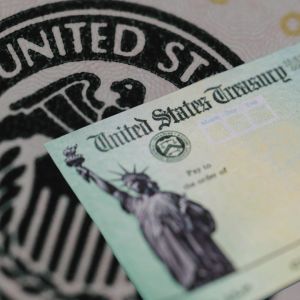US Treasuries jumped on Wednesday after the Fed confirmed plans for two quarter-point interest rate cuts before the end of 2025. Bond traders were already expecting that, but the confirmation came directly after the central bank’s policy meeting wrapped up. The decision caused an immediate reaction. The two-year Treasury yield, which reacts fastest to Fed policy, fell by five basis points, landing at 3.90%. Longer-dated yields across the board also dropped by at least two basis points. The Fed, which has kept rates fixed since December at a target range of 4.25% to 4.50%, said in its updated projections that it’s still planning two cuts this year. Traders responded fast, locking in bets for about 48 basis points of easing — basically pricing in those two cuts. The majority of investors expect the first cut to land in October, though some see it coming as early as September Platinum spikes as metals diverge on Fed’s updated timeline The market reaction wasn’t limited to bonds. Over in commodities, gold took a hit. After the Fed decision, spot gold fell 0.4% to $3,374.75 per ounce. Futures barely moved — ending the session 0.03% higher at $3,408.1. That’s after briefly rising when the rate hold was first announced. But once Fed Chair Jerome Powell spoke, things changed. “We are expecting a meaningful amount of inflation in coming months,” Powell said during the press conference. Silver followed gold downward, losing 1.5% and ending at $36.70 per ounce. But platinum went in the opposite direction. It climbed 4.3%, finishing at $1,319.03 — and it had gone as high as 5% during the day. That was platinum’s highest price since February 2021. Palladium, meanwhile, slipped 0.5%, closing at $1,046.75. Not everyone believes this metals surge is sustainable. Goldman Sachs analysts put out a note warning that the rallies in platinum and silver are “primarily speculative” and aren’t supported by real supply and demand factors. Still, traders are reacting directly to Fed language, ignoring fundamentals for now. Foreigners dump Treasuries as Fed sticks to cautious rate cut roadmap While bond prices were rising in the US, demand from abroad told a different story. Foreign holdings of US Treasuries reached a record $9.05 trillion in March, based on data from the Treasury Department. That’s a jump of nearly 12% from a year earlier. But since late March, overseas institutions have started pulling back. More than 200 central banks, sovereign wealth funds, and foreign official entities store their US holdings with the New York Fed. Those holdings fell $17 billion just last week. Since Trump’s new tariffs in March, the total drop has reached $48 billion. The pullback lines up exactly with the rise in bond market volatility earlier this year. Usually, when foreign monetary authorities sell US debt, they recycle that cash through the Fed’s reverse repurchase facility. That’s where they park cash and get Treasuries as collateral. But not this time. Since late March, foreign usage of that facility has dropped by $15 billion. All of these point to one thing: total foreign-held US assets at the Fed have dropped by $63 billion over just two months. That number includes the drawdown in custody holdings and the reduced activity in the repo facility. The Treasury is scheduled to release the April report on Thursday. That release is expected to show the full extent of this pullback, especially since April was the peak of the recent market chaos. The numbers will help investors figure out whether this is just a reaction to the Fed’s slower timeline — or if there’s a deeper issue with US debt appetite abroad. Cryptopolitan Academy: Want to grow your money in 2025? Learn how to do it with DeFi in our upcoming webclass. Save Your Spot


















